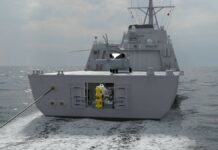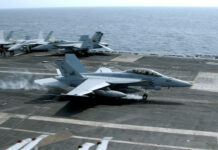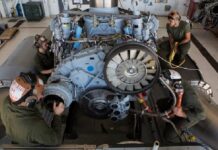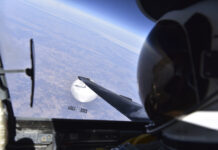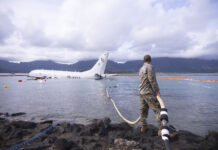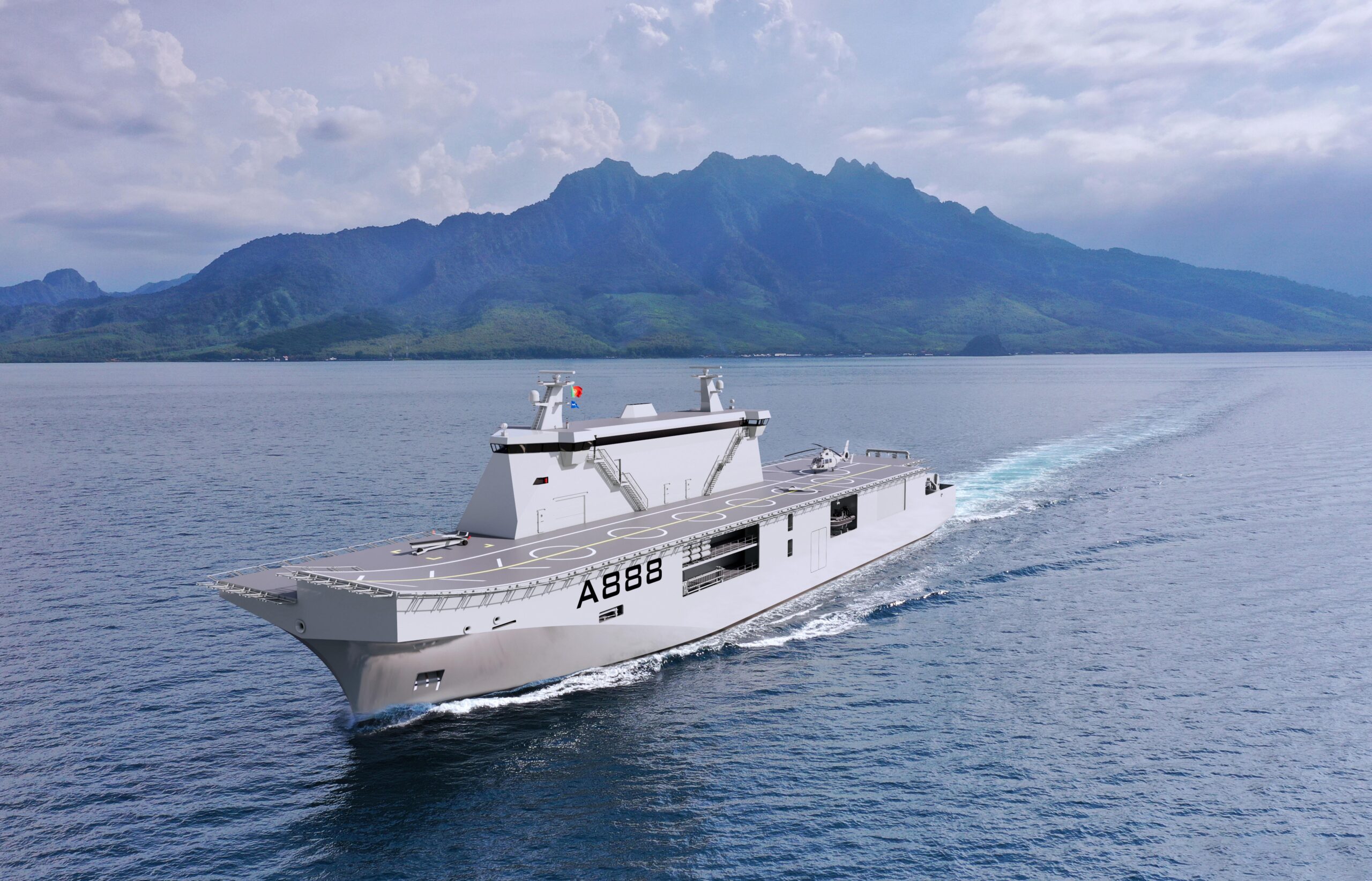
The US Navy’s uncrewed future
Dr Scott Savitz
The US Navy faces several fundamental, interrelated challenges as it tries to shape the fleet it will have in the mid-21st century and beyond. [1] These issues are not unique to the United States, but are common to many democratic nations across Europe and East Asia. The US Navy’s ability to acquire new ships is hampered both by their prohibitive cost and by the limited scale of the US defence industrial base, since the US Congress precludes the navy from buying warships from allied nations. Even if this could be overcome, the US Navy’s long-term ability to adequately crew ships will gradually be diminished by declining cohorts of young people and the unwillingness or inability of many of them to serve.

The emergence of increasingly capable uncrewed technologies may help the US Navy, and other navies facing similar issues, to overcome some of these challenges. This also aligns with the US Navy’s 2024 Navigation Plan, in which then Chief of Naval Operations, Admiral Lisa Franchetti, made the case for increasing operational integration of robotic and autonomous systems. In this article, we explore how this can be done to help make the navies of the mid-21st century more effective and risk-tolerant, enabling them to secure the peace for decades to come.
Identifying future missions to shape long-term fleet design
The development of a fleet is inherently a long-term process. The ships that the US Navy designs and starts to build in the 2020s will be commissioned in the 2030s, and most of those will still be in the fleet in the 2070s, or even 2080s. [2] A key challenge is that future geopolitical circumstances, and how these will translate into operational needs, are unpredictable at such a distance. Any extrapolations from the present are likely to be as wrong as Cold War assumptions from 1975 or 1985 would have been regarding present-day naval needs.
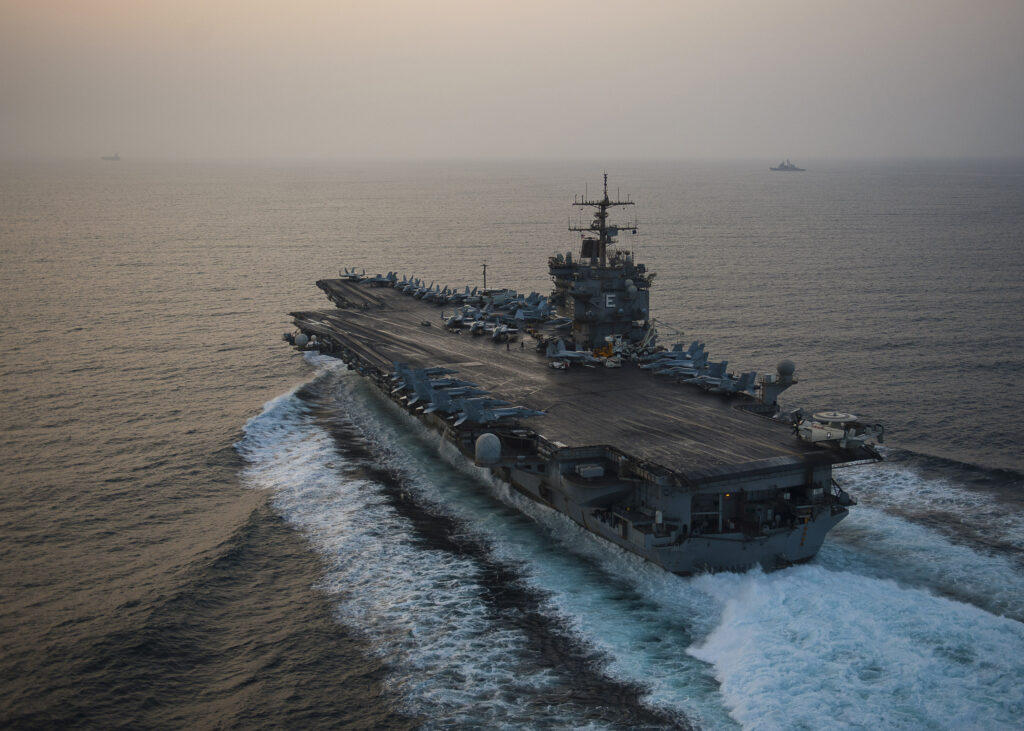
- The first purpose is to secure military and civilian use of the sea and its airspace, while preventing adversaries from using it. Navies need to protect the ability of their nations’ military forces, across all services, to move across and within the sea. They also need to secure civilian maritime shipping and resource extraction, while thwarting the other side’s military and civilian movements at sea. A few relevant missions include anti-submarine warfare, naval mine warfare, surface warfare, anti-air warfare, missile defence, and blockade. These may be supported by intelligence collection, electronic warfare, and other missions.
- The second purpose is to conduct operations against land and the airspace above it, while countering adversaries’ ability to do so. A naval maxim, sometimes attributed to Vice Admiral Horatio Nelson, is that that “the seat of power is on the land.” Key missions relating to this purpose include striking land targets from the sea, landing forces ashore, and operating on inland waterways, as well as forestalling adversaries’ attempts to do any of these.
- The third purpose is to deter hostile actions by demonstrating the ability and will to perform the first two items. This can be achieved using some combination of presence, international engagement, demonstrative exercises, and either public or private communication.
Given this framework, we can anticipate that, regardless of the geo-political specifics, the US Navy of the 2070s and the navies of its allies need to be able to conduct a wide array of possible missions. Even if they do not actually conduct specific missions, that may be – paradoxically – because their ability to do so has deterred an adversary from taking actions that require them. In this context, we can also assume that some types of capabilities will still be required. Ships will continue to launch aircraft for intelligence, surveillance, reconnaissance, logistics, electronic warfare, missile defence, and long-range strike. There will also be a need for ships that can accommodate substantial payloads. Even if some sensors can be distributed to small off-board platforms, large numbers of missiles, torpedoes, and other weapons still need to be launched in bulk.
Using uncrewed vehicles for distributed lethality and increased capacity
There are several advantages associated with the increasing use of uncrewed vehicles across multiple domains in naval operations. Eliminating personnel from a vehicle can free up extensive space and resources for payloads or fuel storage; alternatively, the vehicle itself can shrink in size and cost. The absence of personnel can also reduce design constraints. For example, as Vice Admiral Joseph Metcalf noted in a January 1988 US Naval Institute Proceedings article, ‘Revolution at Sea’ regarding crewed warship redesign, if a ship is no longer controlled by people requiring direct views of the outside world, control functions can be embedded deeply within the vessel, where they may be less vulnerable to superficial damage. Similarly, uncrewed aircraft can be redesigned to be capable of manoeuvres whose extreme accelerations would kill or incapacitate a pilot. This can also enable them to use shorter runways for take-off and landing. The endurance of the aircraft is no longer constrained by that of a human pilot: with periodic air-to-air refuelling and high-reliability design, on-station time can be greatly increased.
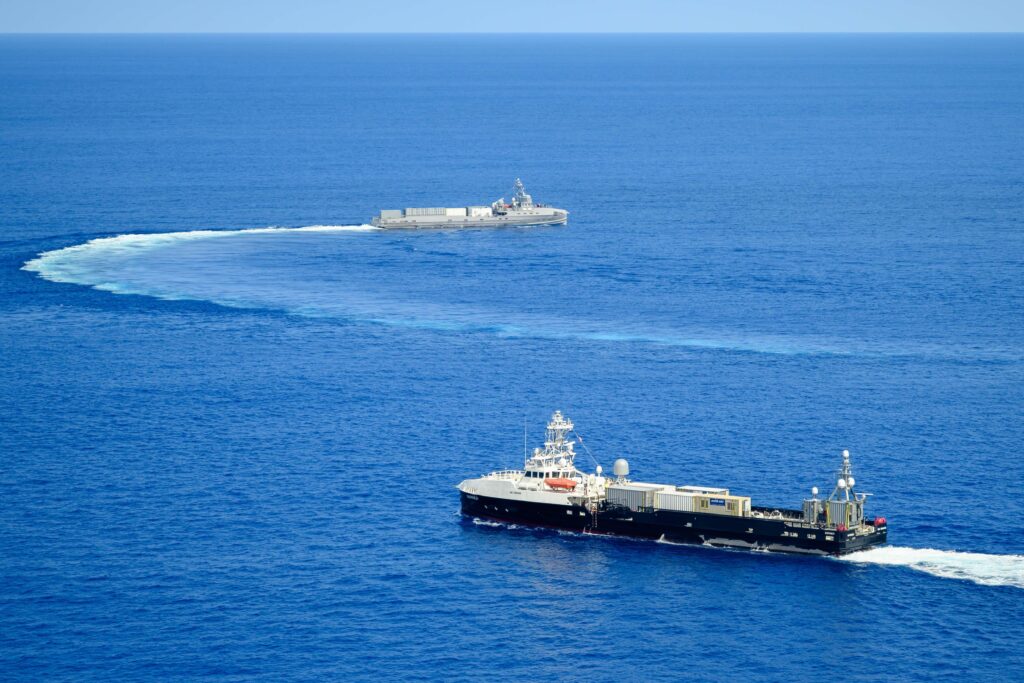
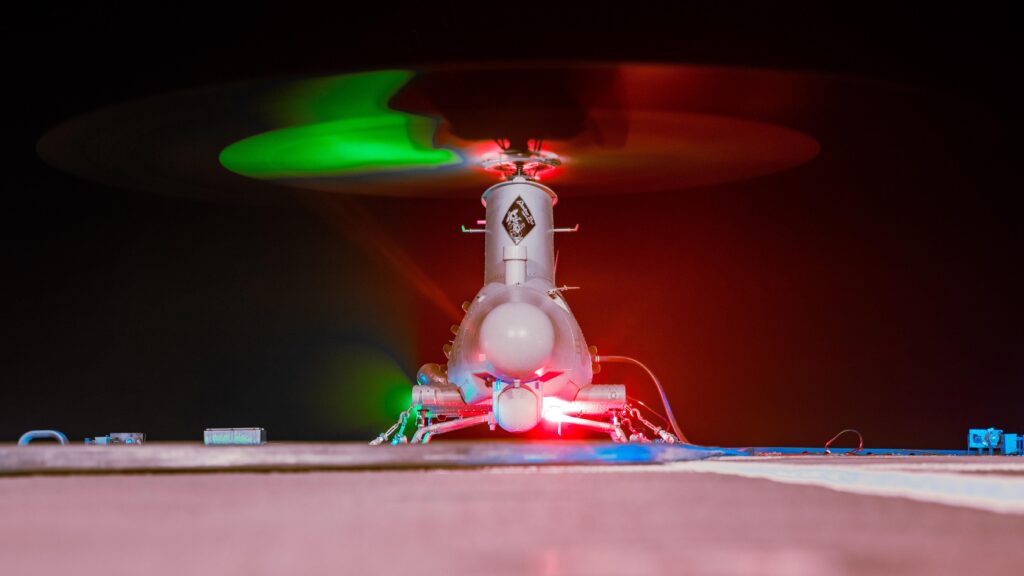
The future aircraft carrier: crewed, with only uncrewed aircraft
In the remainder of this article, we explore two ways in which uncrewed vehicles could reshape navies over time. The first is by having crewed aircraft carriers that only launch uncrewed aerial vehicles (UAVs), and the second is by having full-fledged ships without personnel aboard.

Using advanced algorithms to automate some aspects of watch-standing, while providing better human-machine interfaces to enhance situational awareness, might also reduce watch-stander numbers. Using non-nuclear reactors could further limit both space and personnel requirements. Crew-size requirements that stem from damage control could potentially be diminished through the use of small crawling and swimming robots to investigate and respond, as well as more automated damage-control systems. Moreover, for every hundred operators whose roles were eliminated, dozens more support personnel could also be subtracted from the crew. The net result would be a smaller, less populated ship than today’s aircraft carriers, and one that would be potentially less expensive to build or operate. More of them could therefore be built, enabling greater dispersion of combat power.
Future uncrewed ships
Uncrewed surface vehicles (USVs) are less technologically mature than UAVs. Nonetheless, they are emerging and becoming increasingly capable. Even as USVs extending tens of metres in length are being developed, commercial cargo ships are reducing crew sizes to almost vestigial levels. This is partly due to improvements in both information technology and mechanical reliability.
Some of the advantages of ship-sized USVs have previously been suggested. All of the resources and spaces that would otherwise be required to accommodate humans can be eliminated. Removing some corrosive oxygen from the ship’s atmosphere can also increase system reliability and reduce the need for in-port maintenance. These USVs can have several types of payloads: radars and other sensors, weapons, or fuel. For example, corvette-sized, sensor-studded USVs could operate in an outer circle around a carrier strike group to detect air, surface, or undersea threats. These USVs might even launch small, expendable UAVs to gain further situational awareness. An inner ring of frigate-sized or larger USVs could launch missiles or torpedoes in response to human command. The crewed ships, including one or more UAV carriers, would be at the centre. Several refuelling USVs could operate in their vicinity, with one of their number always going to or from port to refill its tanks. Treating refuelling USVs as external storage tanks could also free up space in crewed ships or enable them to shrink. Communications among various ships would be reliable and secure due to a benign electromagnetic environment: any intruder emitting enough to disrupt communications or perceptions would be easily targeted.
A protracted but steady timeline
The types of changes outlined above will take decades to implement, in part because most of the ships in the US Navy of 2045 are already in the fleet. However, a gradual transition can enable experimentation and learning over time, as was the case for some of the successful naval transformations of the last two centuries. The protracted emergence of all-UAV carriers and ship-sized USVs can avoid the pitfalls of programmes like the US Navy’s Littoral Combat Ship, in which too many untested technologies were combined in an effort to rapidly supplant existing systems. One approach might be to use existing ships as test platforms: for example, an amphibious ship could be repurposed as an all-UAV carrier on a trial basis. Lessons from that experience could inform the development of purpose-designed all-UAV carriers that would accompany existing carrier strike groups to boost capacity and develop concepts of operations. In time, all-UAV carriers could eventually operate without traditional carriers in some contexts, and then gradually become the nuclei of future carrier strike groups.

Dr Scott Savitz
Author: Dr Scott Savitz is a senior engineer at the RAND Corporation. He has led numerous studies for the US Navy, US Coast Guard, and other US and allied services on diverse subjects. He earned his bachelor’s degree in chemical engineering from Yale University, as well as a master’s degree and PhD in the same field from the University of Pennsylvania.
Notes
- This article draws on analysis presented in Savitz, Scott and Amanda Perez, Could the U.S. Navy Fleet of the Mid-21st Century Include Large Uncrewed Vehicles? RAND Corporation, PE-A2854-1, January 2025. As of April 2025 this can be found at: https://www.rand.org/pubs/perspectives/PEA2854-1.html
- The battleship USS Missouri (BB-63), which fought in the Second World War and was famously the site of Japan’s surrender ceremony, also participated in Operation Desert Storm half a century later. Similarly, the aircraft carrier USS Enterprise (CVN-65) was involved in the 1962 Cuban Missile Crisis and retired in 2012.





